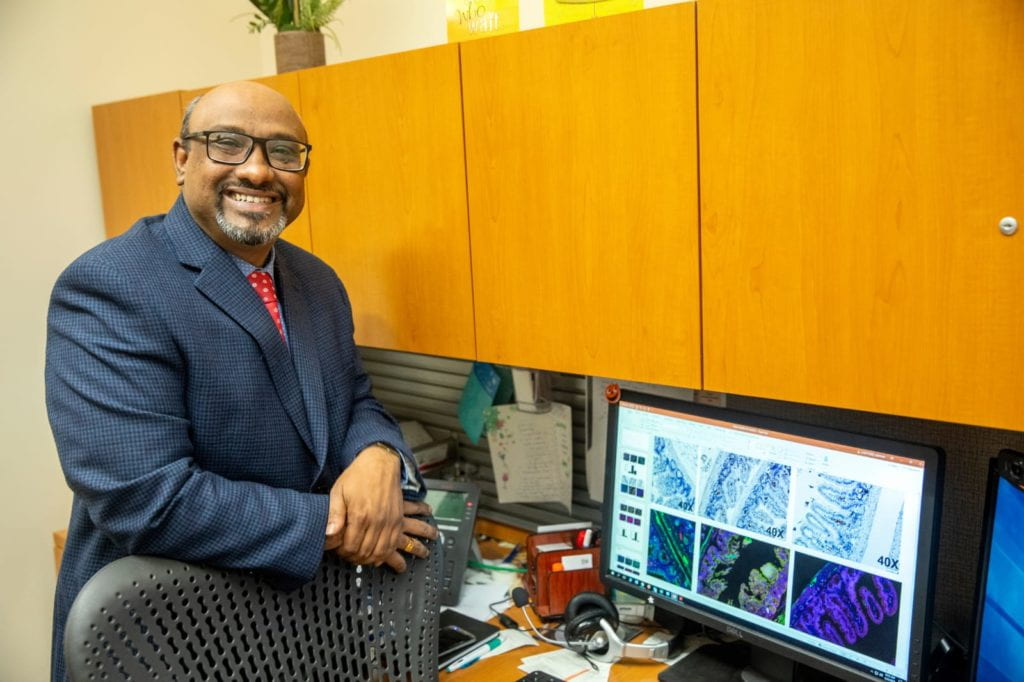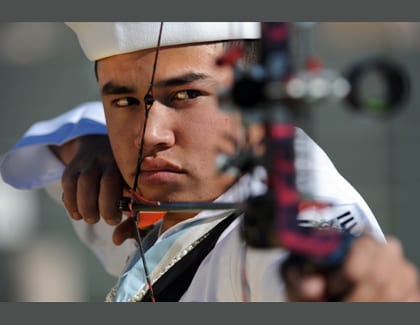Veteran student pictures a better life
Camera in hand, Gilberto Cardenas has chronicled his journey from soldier to undergrad researcher. His photographs have appeared in international scientific journals.
At 30, Gilberto Cardenas has seen more of the world than most UC Irvine undergraduates — and he’s got the photos to prove it.
A stint in the Army took the Mexico-born Californian to South Carolina, Georgia and Germany. “It was physically and mentally hard,” he says. “So I decided to try photography as a hobby to relieve the stress.” A camera became his constant companion, and Cardenas discovered he had talent.
His images of exotic fish have made the covers of international
scientific journals. He’s filmed underwater videos of manta rays and
sharks on a National Geographic Society-funded expedition off the coast
of Cancun, Mexico. And he has become an unofficial UCI campus
photographer, taking pictures for Student Affairs of staff and students
and shooting outreach activities.
“I’ve experienced a lot of life at a young age. I’ve traveled; I’ve explored,” says Cardenas, a fifth-year applied mathematics major. “My background has given me a focus, a direction in which I want to go.”
He’s come a long way from his childhood roots. When he was 8, Cardenas immigrated with his family to Costa Mesa. “I grew up in a bad part of town; there were gangs and shootings,” he says. “My parents were always working, and we didn’t have role models.
A lot of my friends became drug dealers, and some went to jail. I didn’t want to end up like them, so I decided to get away from it all and join the military.”
Cardenas served six years as a helicopter crew chief. He also went back to school, attending colleges wherever he was deployed before transferring to UCI from Orange Coast College two years ago. Since then, Cardenas has seen even more of the world — as a student researcher in the biomechanics lab of his mentor, Matthew McHenry, assistant professor of ecology & evolutionary biology.
“Ecology & evolutionary biology has its own math,” he says. “And the data we collect and information we present relies on images. I love the fact that I can combine various disciplines in this field. It’s a mix of art and science.”
“Professor McHenry’s cool. He talks to me as though we’re on the same level, not like teacher to student. He lets me work in his lab and run my own experiments,” says Cardenas, who’s currently examining how zebra fish detect changes in water pressure to evade predators.
For his part, McHenry says Cardenas has “such an amiable personality that my colleagues, grad students and fellow undergraduates greatly enjoy his presence in the lab. He’s highly curious and independent and makes major contributions to the projects he’s working on.”
In April 2009, Cardenas was the only undergraduate to participate in an on-site study of Mexican blind cave fish. His intended probe of the fish’s predator-prey interactions turned into an investigation of why many cave populations near San Luis Potosi, Mexico, were going extinct.
After interviewing local residents, Cardenas determined that dynamiting in area mines had opened cracks in some coastal caves, allowing the water to seep out — an important finding that he shared with biologists who were puzzled by the species’ declining numbers.
Cardenas’ camera has helped him pursue his academic interests: “Photography has lots of math and science behind it, and by understanding simple and complex equations, I get to create images full of information for scientific use.”
His shot of spiral-shaped hagfish, boneless creatures that live at the bottom of the ocean, was featured on the October cover of Zoology to illustrate an article (PDF) by Adam Summers, associate professor of biological sciences and engineering, and his photo of a shiner fish appeared on the cover of the April 2010 Journal of Experimental Biology.
This summer, Cardenas faced his toughest assignment: filming whale sharks and giant mantas — some with 20-foot wingspans — in the waters off Cancun. Once again, he found himself the only undergraduate among experienced doctoral students.
“I was really scared. I thought I’d be the person in the boat, but I was the person in the water,” he says. “Whale sharks are filter feeders — they don’t have teeth. But I was worried that sharks with teeth would show up.”
Cardenas says he’s gained valuable experience presenting his research at conferences through UCI’s California Alliance for Minority Participation, which helps underrepresented minority students earn degrees in science, technology, engineering and mathematics, and he’s a Southern California Edison Scholar. After graduating next June, he hopes to enter an interdisciplinary graduate program that will allow him to pursue photography, biology and math. “I want to continue learning and exploring,” he says. And maybe see some more of the world.


